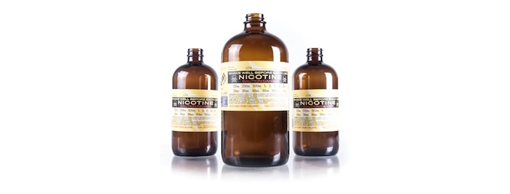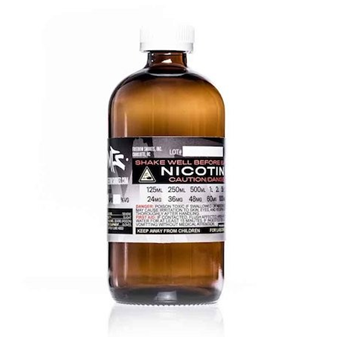
Today, many vapers consider reducing the nicotine content as a safer and more beneficial means of either limiting the harmful effects or quitting smoking entirely. But a recent study has shown that nicotine does not pose any threat. The study points out that exposure to high concentrations of toxins is the real problem. This study is in line with a seminar presented by Dr. Farsalinos at the Global Forum for Nicotine in June.
Most of the arguments as to why people shouldn’t vape centers on the nicotine content and possible addiction. But in a 2014 talk titled “Reefer Madness”, Emeritus Professor Peter Killen argued that there is no such thing as Addiction to Nicotine. “Cigarette addiction is not caused by Nicotine”, he said.

It’s high time we realized that the cause of cigarette addiction is not nicotine itself but the drug cocktail of nicotine. There has been lots of research on tobacco most of which focuses on nicotine, yet none has surfaced with nicotine being the culprit. Probably that is the reason you can always dash your way to the drugstore and get yourself a packet of Nicorette chewing gum.
A recent study was carried out by McRobbie, Soa, Kimber, and Dawkins on ‘the absorption of Nicotine from e-cigarettes over a 12-month period’, and published in the Journal of Addictive Behaviours. The result of this study showed that reducing the concentration of nicotine in e-liquid as a way of minimizing nicotine intake by vapers, may not be the case.
In one of their studies conducted on vapers over an 8-month period, they reported an increase in the amount of liquid consumed and constant levels of salivary cotinine (a nicotine metabolite) although there was a significant decrease in the e-liquid nicotine concentration for the exclusive vapers.
It has been reported that vapers increase the volume of juice in a bid to cope with the low concentration of nicotine in the e-liquid in a process known as self-titrating. This follows the paper on large-scale ignorance surrounding vaping and the difference between smoking and nicotine published by Ndoen, King, and Borland. However, Google image search has played a major role in the confusion surrounding nicotine and cigarette as it links both and is further propagated throughout the media.
In another study, 32 vapers were recruited, most having vaped for around three years, by a team from Queens, East London, and South Bank. The subjects were closely monitored for a period of 12 months. Out of the 32 subjects, 3 returned to smoking. 1/3 of the 29 sub-ohmed from time to time while 1/4 sub-ohmed daily and 2/3 used a 50/50 liquid.
The number of reports of sub-ohming and use of fruit flavored e-liquids after the 12 months period was found to increase. However, one subject dropped out of the study while another subject failed to respond after the 12 month study period. However, a cohort study was carried out as the subjects were surveyed again. This time, it was found that over time there was a significant decline in the self-reported nicotine concentrations in e-liquid while the volume of e-liquid consumed showed an increase.

It can be concluded from the study result that a reduction in the concentration of nicotine in e-liquid by vapers does not affect nicotine intake since nicotine absorption levels remain constant.
Increase in nicotine absorption levels depends on an increase in the volume of liquid consumed (self-titration mechanism). This is usually achieved by altering the puffing patterns in response to a change in nicotine exposure. This is clearly supported by the previous study reported by Dawkins et al. (2016) on compensatory puffing. In this study, 11 experienced vapers were tested in the lab. It was found that the amount of liquid consumption, puff number higher and puff duration longer when using the nicotine concentration e-liquid volumes of 6 mg/mL volume compared to the 24 mg/mL.
According to Dr. Konstantinos Farsalinos, vapers need to understand that the amount of exposure largely depends on the amount of liquid consumed. He further added that there is a significant increase in liquid consumption as a result of the transition from mouth-to-lung vaping to the direct lung inhalation. This poses a high risk because the more liquid consumed, the more vapers are exposed to potentially toxic chemicals. That means they could double their exposure to toxins by merely doubling their consumption. However, he added that today’s products have very low levels of aldehydes.
